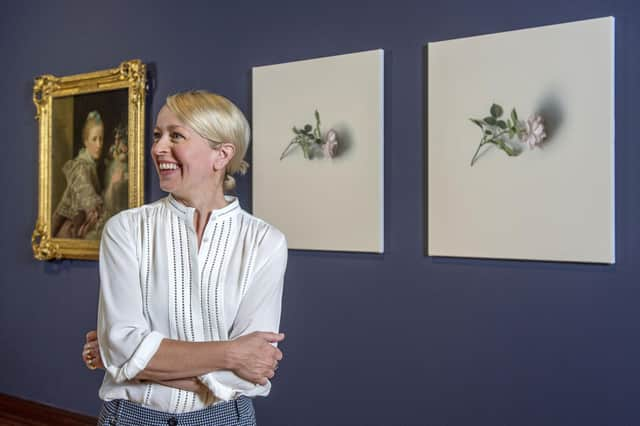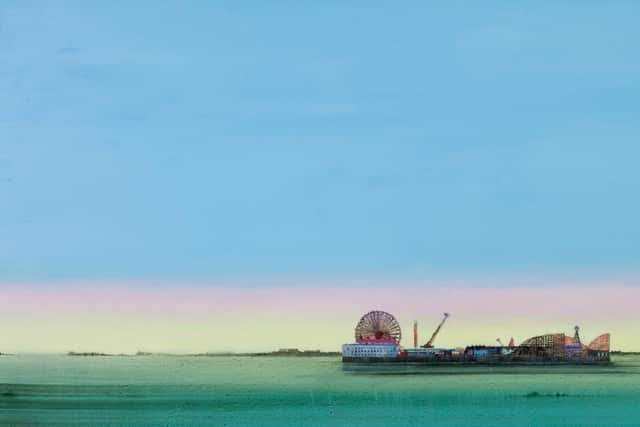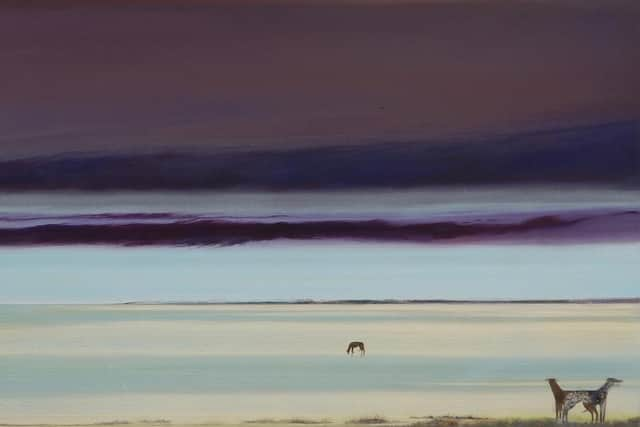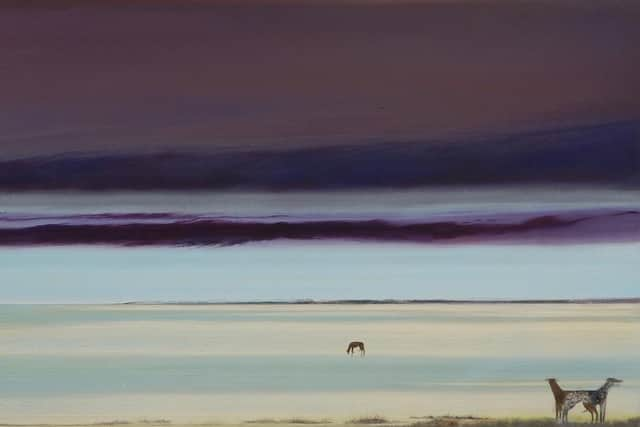Art reviews: Alison Watt | Jock McFadyen


Alison Watt: A Portrait Without Likeness, Scottish National Portrait Gallery, Edinburgh ****
Jock McFadyen: The Lost Boat Party, Dovecot Studios, Edinburgh ****
Advertisement
Hide AdAllan Ramsay (1713-1784) painted some of the finest of all portraits of women. He did so, not because he had some special affinity with them or simply knew how to flatter. He was an amusing and sociable person, necessary gifts for any portrait painter, but the secret of his female portraits is that they are first of all paintings of people. Being female is an aspect of their person, but not something into which it is subsumed. They are individuals above all. That said, he did not ignore their femininity. On the contrary, he conveyed it in all the force of its social presence. He painted the wonderful costumes women of status wore with extraordinary skill and sensitivity, conveying its undoubted impact but never losing the sitter in her costume. (The colouring is always so apt and so flatteringly right you do wonder what conversations he had with his lady sitters in front of their wardrobes.)


Unfortunately, the National Galleries of Scotland have an awful lot of half-length portraits of men and very few of women. (Note to the director: an omission to be corrected as soon as possible.) Those few they do have, however, include portraits of the artist’s first wife, Anne Bayne, who died early in their marriage, and his second wife, Margaret Lindsay, with whom he eloped. (Her father wouldn’t countenance her marrying a mere painter.) These two portraits are by their nature intimate in a way not possible in a commissioned portrait. Indeed, in both we can read the artist’s love for his sitter. In the first, this is because he pays her the compliment of painting her as she is, not prettified. In the second, we see not only his affection for her, but, as she returns his glance, how it is mutual.
The NGS have in their collection the unique treasure of most of the drawings from Ramsay’s studio. Alison Watt has availed herself of this marvellous resource as she has studied Ramsay’s female portraits. The exhibition Alison Watt: A Portrait Without Likeness, now showing after a year’s delay, is the outcome of this study. The artist explains her title saying that “the still life (in a portrait) can be very intimate. By its nature it is linked to the portrait. The still life is a portrait without likeness.” The show includes the portraits of Anne Bayne and Margaret Lindsay and a small selection of drawings that relate to Ramsay’s female portraits. Following from her premise, the artist has taken details from these and others among Ramsay’s female portraits and painted variations on them. The rose that Margaret Lindsay is holding in her hand, for instance, subject of an exquisite drawing by Ramsay, other roses, pieces of lace suggested by details of costume, quills and books like those that some of Ramsay’s bluestocking sitters are holding. Among the most striking are a cabbage leaf that in her portrait Frances Boscawen is holding as a receptacle for some fruit from her garden and the pink ribbon at Anne Bayne’s neck. This is painted as a choker, however, and the catalogue hints darkly at an image of constraint, but the ribbon in the painting is not around her neck. It holds the lace of the bonnet that frames her face.
Nevertheless, all these details are exquisitely painted and presented in complete isolation against plain grounds that range in tint from white to soft grey. The objects are lit and they cast shadows, but they are not presented in the all-embracing light which Ramsay painted so beautifully. Light distinguished both Ramsay and Raeburn from their English contemporaries, though not from their Dutch predecessors. For Joshua Reynolds, who said of Ramsay that he was a man “of remarkable good sense, yet not a good painter,” light was just another pictorial device, but for Ramsay it was the essential vehicle of all visual truth. Like his friend David Hume who looks across at this exhibition from the gallery next door, Ramsay was an empiricist. (In Ramsay’s portrait of her, not cited here, Elizabeth Montague is actually leaning her elbow on a book with Hume’s name legible on the spine.)
Watt’s details are presented like the attributes of a saint, a visual key to identity which needs no context. Their one word titles mostly point to the sitter. Thus a piece of lace is labelled Balcarres, linking it to Ramsay’s portrait of Anne Dalrymple, Countess of Balcarres. But these relationships are not explained except in the catalogue.


This allows the artist’s work to speak independently, but I think it will mystify visitors. It does, however, also point to the aesthetic distance between between Watt and Ramsay. Ramsay summarised his aesthetic in his Dialogue on Taste where an untutored servant girl’s response to a portrait that it is “vastly natural” is all that is required of a picture. In the absence of priests or shamans we are increasingly inclined to regard our artists as endowed with privileged access to esoteric knowledge. I am not sure it is healthy. Certainly Ramsay was the opposite. His gift was the almost invisible skill to record and illuminate knowledge we all share. Separated from the paintings that inspired them, Watt’s isolated and unexplained details hint at the esoteric. Perhaps because of this, however, for all her exquisite skill in the end she could never match Ramsay’s naturalness and effortless fluency. No contemporary painter ever could. Our sense of the artist’s role and our way of seeing have changed too much. That, I think, is what we learn from this fascinating visual conversation across two and half centuries.
Advertisement
Hide AdAt Dovecot, Jock McFadyen’s show The Lost Boat Party marks the creation of a tapestry from one of this paintings of Mallaig seen from across the Sound of Sleat. The tapestry is a lovely thing in deepest blue with a low horizon of distant twinkling lights. The show includes other paintings of Mallaig, but also a range of paintings, mostly recent, marked by the same wide, Cinemascope space. In the title picture, The Lost Boat Party, beneath a huge pink and blue sunset sky, a construction somewhere between a Mississippi steamer and a fairground seems to be lost in a vast swampy lagoon. In Carnoustie, the town itself is a barely legible ripple in the black line of the horizon. Three dogs are the only other punctuation beneath a black and purple sky. There are his familiar images of neglect here, an abandoned bus in a wide landscape, a block of flats above an embankment adorned with graffiti, but in this other mode The Beach is simply divided horizontally between grey sand and blue sky, but lost in the sea of sand are figures doing various Bosch-like things. Fife, however, is almost entirely abstract, just a dark line of land between pink and purple sea and sky. This near emptiness and passages of painting on unprimed canvas suggest, not only the cinema, but abstract painting. Indeed, the blue of Mallaig is Yves Klein’s blue. This is another fascinating dialogue, although not with quite so remote a past.
Alison Watt until 9 January 2022; Jock McFadyen until 25 September
A message from the Editor


Advertisement
Hide AdThank you for reading this article. We're more reliant on your support than ever as the shift in consumer habits brought about by coronavirus impacts our advertisers.
If you haven't already, please consider supporting our trusted, fact-checked journalism by taking out a digital subscription at https://www.scotsman.com/subscriptions